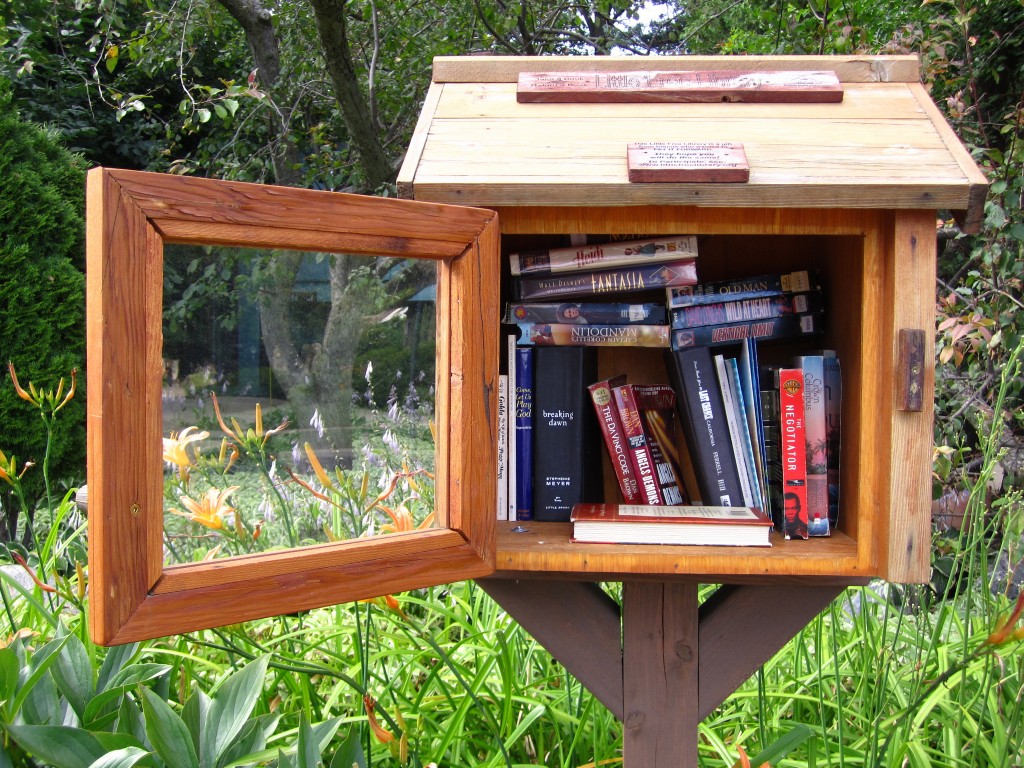
Little Free Library (Photo by Ali Eminov/Flickr)
I’ve always been a big fan of libraries. I received my first library card on my 4th birthday, which my parents tricked me into thinking was the best birthday gift in the world. It wasn’t exactly a gift – you simply had to be 4 in order to get a library card.
It was in that library where I spent many afternoons with my grandfather, pouring over microfiche of old newspapers from important dates in history. We would look at headlines and then check out books related to the Titanic, World War II or the Cuban Missile Crisis. It was also in that library where I spent afternoons reading magazines, fell in love with journalism and decided to become a writer.
Over the years, I’ve watched libraries adapt in order to stay relevant. They’ve modified their programming and their collections to reflect changing users and use cases. Many of these modifications and projects are ones that journalists should check out – no pun intended – because they’re equally relevant to our field. Here are my favorites.
1. The Awesome Box seems like a very simple idea. It’s a box, labeled Awesome, that libraries can put next to their regular checkout counter. If you check out a book and think that it’s awesome, you can put the book in the Awesome Box when you return it. Seems simple enough, right? But here’s where it gets really awesome: books with the awesome label are then shared publicly on the library’s website.
I love this because it makes each individual reader think about the larger community they live in, not just the one that they share through online social networks. It’s smart, because it also positions the library as a place where people can find out what’s awesome — and that’s a pretty high bar.
Imagine if a publication did something similar, and and allowed its audience to label an article awesome. The bar for awesome is higher than a like — and the publication would be sharing what its audience found awesome on its own website, as opposed to on a social network. This helps curate content and could create a greater network for “awesome” content between publications.
2. You may have seen a Little Free Library around your town; it usually consists of a small wooden structure with books placed inside. The idea is pretty simple: anyone can take or leave a book, and the structure itself becomes a library.
Having these “libraries” around a town does more than promote literacy; it also promotes the idea of a library. Even if a library is not affiliated with a Little Free Library, it still benefits from having them close by.
This idea is naturally one that can expand to news organizations. Imagine a public radio listening station in a town square, at an airport, or in other public spaces. Picture a print publication having a bureau in a food truck or on a community bulletin board. By thinking outside of typical spaces, news organizations can expose more people to the news while finding stories they might otherwise be unable to find.
3. The Vermont Library Association’s Passport program encourages people to visit libraries around the state of Vermont and gives them stamps and small prizes for doing so. They also encourage people who participate to take photos and then post them on social media.
The idea of creating a Passport for News is intriguing: the idea of letting people measure their news consumption is more so. We measure analytics internally at news organizations, but what if we designed analytics for the user? Something like a dashboard that measured all news consumption in a week and then said: “You read three international stories and four local stories this week. You read five good sources of news and one terrible source of news. Your total news consumption was 22 minutes.”
We could guide readers and help them navigate the news through a FitBit for their news consumption. (I imagine this information might also be intriguing to advertisers or the publications themselves.)
4. One last idea from the library world: permalinks. Permalinks help researchers and courts create permanent links to online sources. The idea is this: as websites change, links die and researchers have a difficult time citing online sources in their work. A recent study from the Harvard Law Review found that 25% of links cited in Supreme Court cases were no longer functional. Even more troubling is when an entire publication shuts down and its links disappear. A consortium of law libraries are working on Perma.cc, a service that both preserves links and content. Creating and then using permalinks will help future researchers — not to mention grandfathers and granddaughters who might want to peruse the archives one day.






